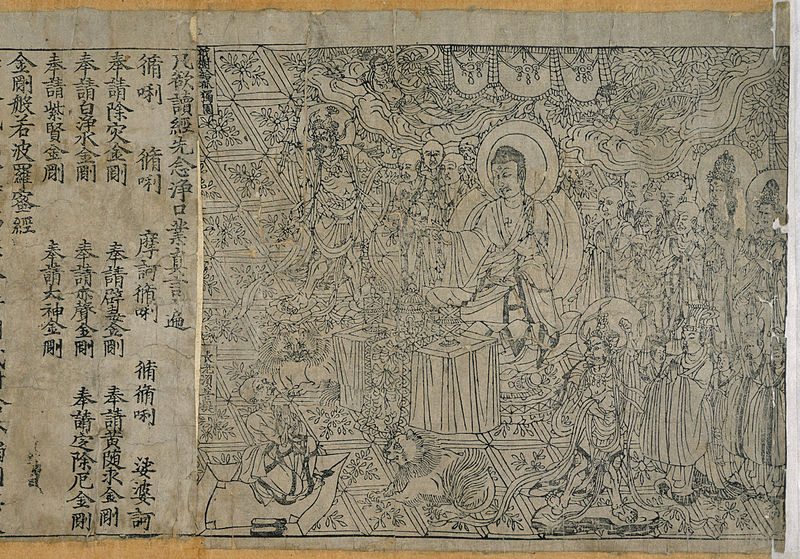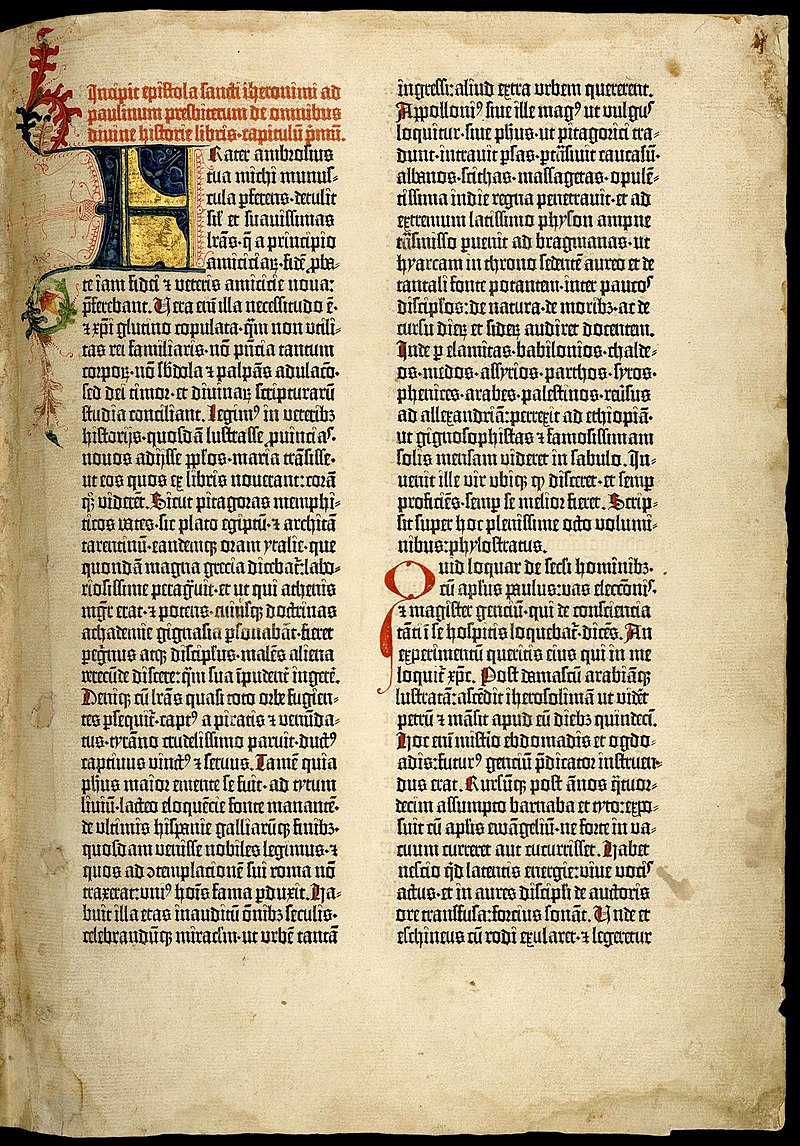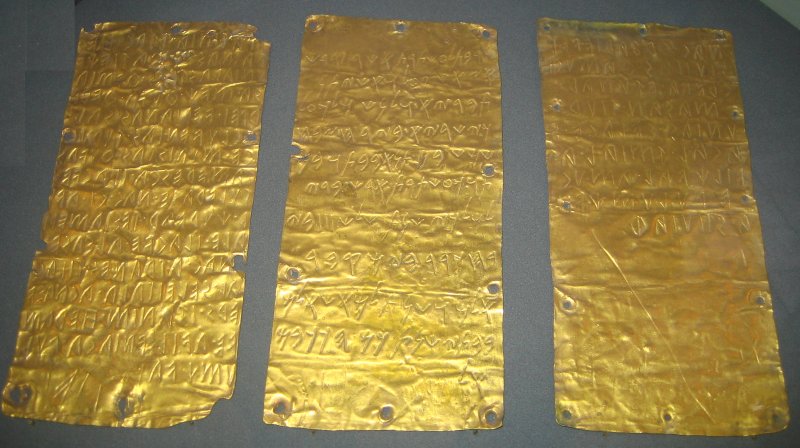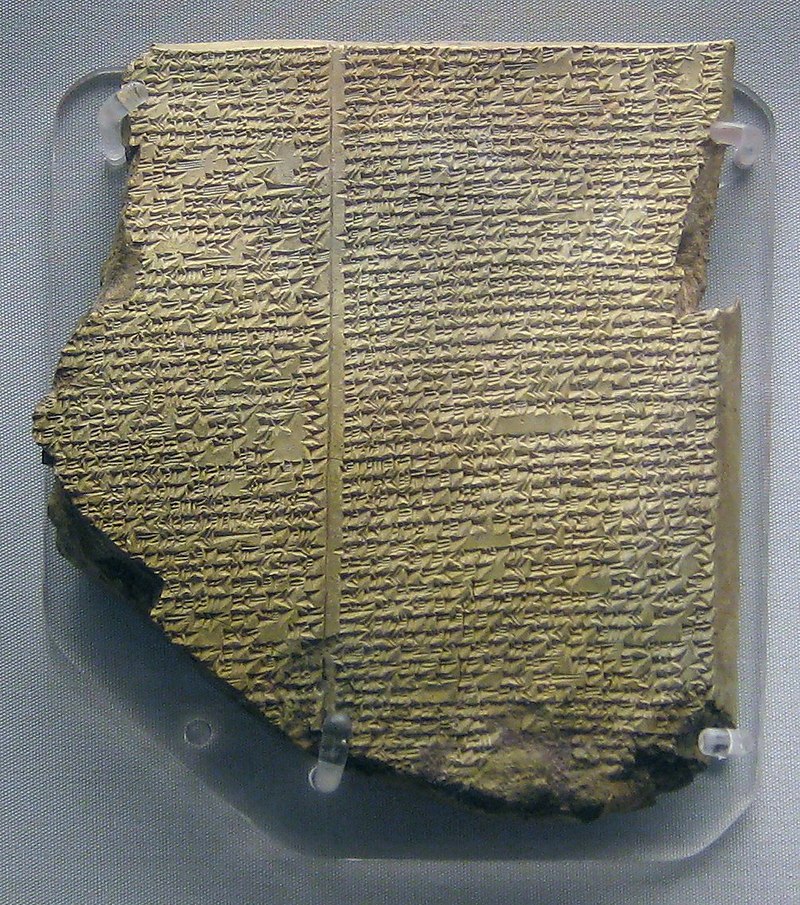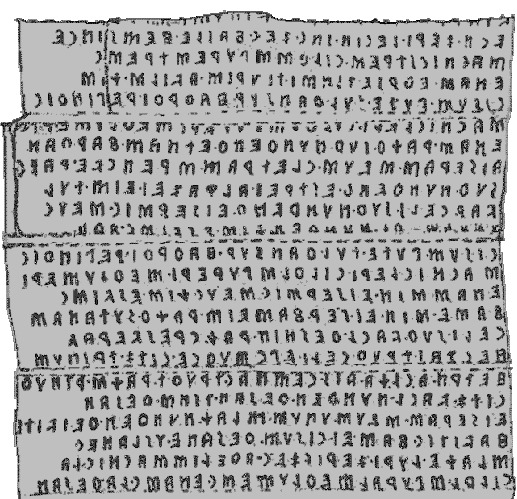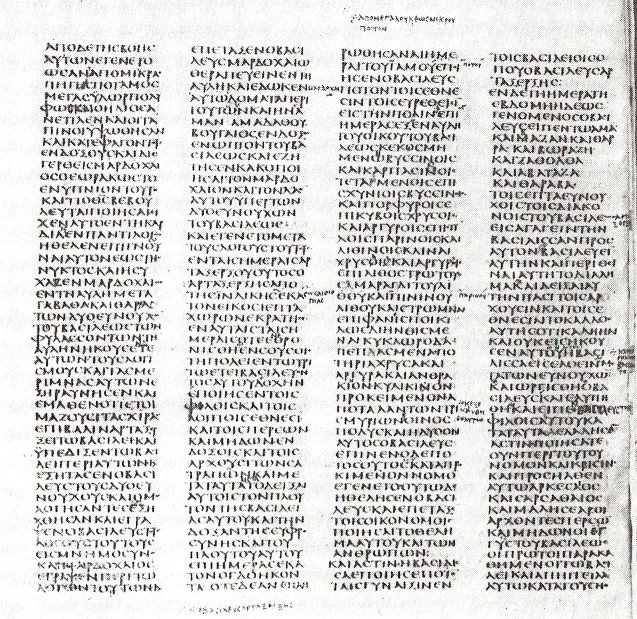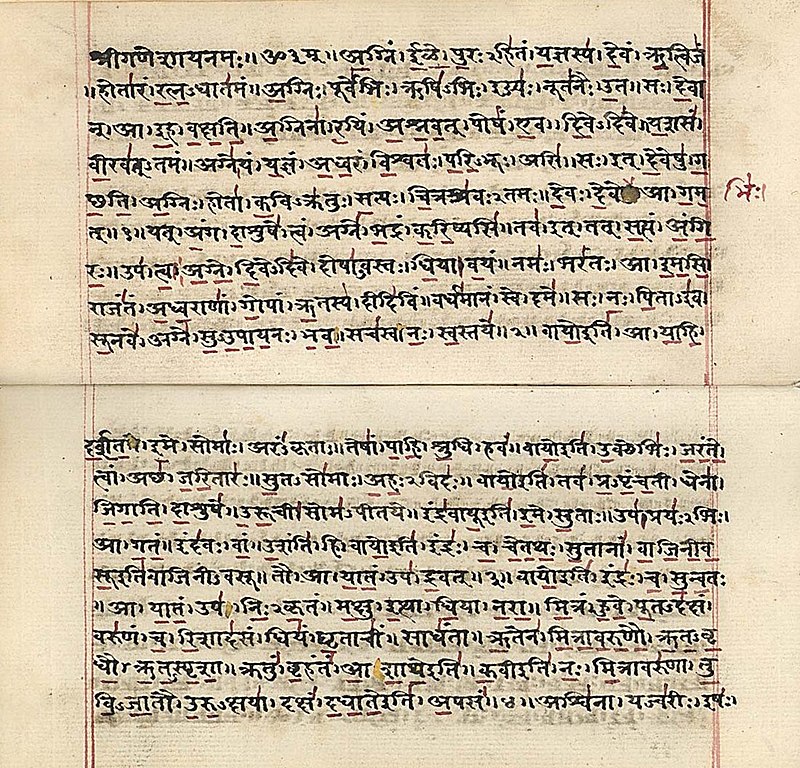Ancient texts are the windows through which we glimpse the vast expanse of human history and culture. These documents, whether etched in stone, scribbled on papyrus, or printed on paper, provide unparalleled insights into the lives, thoughts, and aspirations of our ancestors. They encompass a wide array of genres, including religious scriptures, poetic epics, philosophical treatises, and historical records, each offering a unique perspective on the societies from which they emerged.
The study of these texts is crucial for understanding the development of civilizations, the evolution of language, and the exchange of ideas across continents and epochs. They help us to chart the course of human progress, from the dawn of writing to the cusp of the modern era, illuminating the shared experiences and diverse paths that have shaped the human story.
Let’s discuss about the oldest book ever written and where are they now.
The Diamond Sutra (868 AD)
The Diamond Sutra holds the title of the world’s earliest known printed book, dating back to 868 AD. This remarkable Buddhist scripture is part of the Mahayana Buddhism tradition and was discovered in the Mogao Caves near Dunhuang, China, in the early 20th century. The text itself is a dialogue between the Buddha and his disciple Subhuti, focusing on the concept of non-attachment and the nature of reality. What makes the Diamond Sutra particularly significant is not just its content, but the method of its creation. Printed on a scroll over 5 meters long using woodblock printing technology, it represents a pivotal moment in the history of book publishing, showcasing the advanced printing techniques of the Tang Dynasty.
The discovery of the Diamond Sutra was a monumental event in the study of Buddhism and the development of printing technology. Its existence challenges the Western-centric narrative of the invention of the printing press, as it predates Gutenberg’s Bible by nearly 600 years. The sutra’s teachings emphasize the importance of altruism and the practice of perceiving the impermanence of the physical world, ideas that have resonated through centuries. Today, the Diamond Sutra is not only revered for its religious significance but also celebrated as a landmark in the history of human communication, highlighting the spread of ideas and the evolution of written expression across civilizations.
The Dead Sea Scrolls (3rd Century BCE to 1st Century CE).
The Dead Sea Scrolls are a collection of Jewish texts that were hidden away in caves near the Dead Sea, only to be accidentally discovered by a shepherd in 1947. These ancient manuscripts date from the 3rd century BCE to the 1st century CE and consist of a wide variety of texts, including the Hebrew Bible, apocryphal works, and sectarian manuscripts related to the beliefs, regulations, and practices of a Jewish sect, believed to be the Essenes. The scrolls provide unparalleled insights into the Hebrew Bible’s textual traditions, the diversity of Jewish religious life in the Second Temple period, and the origins of Rabbinic Judaism and early Christianity.
The significance of the Dead Sea Scrolls cannot be overstated. They have transformed our understanding of Jewish history, religion, and the Bible’s development. By offering a direct window into the past, these texts challenge scholars to reconsider the historical context of religious development during a pivotal period in Western religious history. For instance, variations in the texts when compared to the traditional Masoretic Text of the Hebrew Bible have sparked discussions on scripture interpretation and the fluid nature of religious texts. The preservation of these ancient documents, some over 2,000 years old, is a testament to the enduring nature of written word and its power to convey religious and cultural identity through the ages.
The Gutenberg Bible (1454-1455)
The Gutenberg Bible, printed by Johannes Gutenberg in Mainz, Germany, between 1454 and 1455, marks a revolution in the history of book-making and is considered the first major book printed using movable type in the West. This innovation not only made books more accessible but also paved the way for the spread of knowledge, contributing to the Renaissance and the scientific revolution. The Gutenberg Bible itself is an exquisite piece of craftsmanship, featuring Latin text printed on vellum or paper, illuminated with beautiful decorations by hand in some copies. Its production demonstrated the potential of movable type printing technology and set the stage for the mass production of books, transforming the cultural landscape of Europe and the world.
Owning a Gutenberg Bible today is synonymous with possessing a piece of history that changed the world. Of the original 180 copies believed to have been produced, only 49 are known to survive in various states of completeness. These remaining copies are held in esteemed collections around the globe and are considered invaluable treasures. The Gutenberg Bible’s historical significance lies not only in its content—the Vulgate version of the Christian Bible—but also in its role as a symbol of the democratization of knowledge. It exemplifies how technological innovation can drive monumental shifts in society, impacting education, religion, and the intellectual life of humanity.
The Pyrgi Gold Tablets (circa 500 BCE)
The Pyrgi Gold Tablets, discovered in 1964 near the ancient Etruscan port city of Pyrgi, Italy, are three gold leaves that bear inscriptions in both Etruscan and Phoenician languages. Dating back to around 500 BCE, these tablets are a rare example of bilingual inscriptions, offering invaluable insights into the linguistic, religious, and diplomatic interactions between the Etruscans and the Phoenicians—one of the earliest known instances of written diplomacy. The texts are dedications made by Thefarie Velianas, the ruler of Caere, to the Phoenician goddess Astarte. The tablets not only shed light on the religious practices and international relations of the time but also provide crucial data for the study of Etruscan and Phoenician languages, which remain partially undeciphered to this day.
The significance of the Pyrgi Gold Tablets extends beyond their historical and linguistic value; they symbolize the interconnectedness of ancient Mediterranean civilizations. The presence of Phoenician alongside Etruscan text illustrates the cultural and commercial exchanges that took place across the Mediterranean Sea, highlighting the role of the Etruscans as key players in ancient trade networks. These tablets are a testament to the complexity of ancient societies, their relationships, and their influence on each other, offering a tangible connection to a time when the foundations of modern Western culture were being laid. Their preservation and study continue to provide scholars with essential clues into the past, making them one of the most important archaeological finds of the 20th century.
The Epic of Gilgamesh Tablet (circa 2100 BCE)
The Epic of Gilgamesh is one of the earliest known works of literary fiction, hailing from ancient Mesopotamia. The story, inscribed on a series of clay tablets, narrates the adventures of Gilgamesh, the semi-mythical King of Uruk, and his quest for immortality, exploring themes of friendship, the human condition, and the desire for eternal life. The most complete version was discovered in the library of King Ashurbanipal in Nineveh (modern-day Mosul, Iraq) in the 19th century. This epic not only stands as a monumental work in the history of literature but also offers profound insights into the social, political, and religious life of the time, reflecting the values and beliefs of ancient Mesopotamian society.
The narrative’s enduring appeal lies in its exploration of universal themes that resonate with the human experience across millennia. The Epic of Gilgamesh has influenced numerous cultural works and is considered a precursor to later epic poems and stories from various cultures. Its translation into multiple languages has allowed it to reach a global audience, ensuring its place in the canon of world literature. The preservation of this epic, through the meticulous work of scholars and archaeologists, has provided invaluable contributions to our understanding of early literary forms and the complex civilizations that produced them. The Epic of Gilgamesh remains a testament to the artistic and intellectual achievements of ancient Mesopotamia, captivating readers and scholars alike with its depth and beauty.
The Etruscan Linen Book (circa 3rd century BCE)
The Etruscan Linen Book, also known as the Liber Linteus, is an extraordinary artifact that offers a rare glimpse into the Etruscan civilization, one of the ancient cultures of Italy before the rise of Roman hegemony. Preserved as mummy wrappings in a tomb in Egypt, this linen cloth is the only known example of a book written in the Etruscan language, consisting of texts that appear to be ritual in nature. The use of linen as a writing material and the book’s eventual repurposing for mummification encapsulate a fascinating story of cultural intersection, preservation, and the afterlife of objects. The Liber Linteus provides crucial data for understanding the Etruscan language, which remains only partially deciphered, and offers insights into the religious practices and daily life of the Etruscans.
The journey of the Etruscan Linen Book, from a religious or ceremonial text to part of a mummy’s wrappings, highlights the interconnectedness of the ancient world. Discovered in the 19th century and now housed in the Archaeological Museum in Zagreb, Croatia, its study has posed significant challenges due to the limited understanding of the Etruscan language.
The Codex Sinaiticus (circa 330-360 CE)
The Codex Sinaiticus, dating from the 4th century CE, is among the earliest and most complete manuscripts of the Christian Bible. Written in Greek, this codex contains the oldest complete copy of the New Testament, along with a significant portion of the Old Testament and some non-canonical books. Its discovery in the 19th century at the Monastery of Saint Catherine on the Sinai Peninsula marked a monumental moment in biblical scholarship and Christian history. The Codex Sinaiticus is invaluable for understanding the development of the Christian biblical canon and for textual criticism, providing a critical comparison point for later biblical manuscripts.
The Codex’s historical importance is matched by its scholarly value. Its text differs in several places from the later standardized versions of the Bible, offering insights into how early Christians read and interpreted their sacred texts. Today, the Codex Sinaiticus has been digitized and made available online, allowing scholars and the public alike unprecedented access to this ancient treasure. Its preservation and study underscore the importance of maintaining historical documents, not only for their religious significance but also for their contribution to the understanding of early Christian history, textual transmission, and the development of religious thought.
The Rigveda (circa 1500-1200 BCE)
The Rigveda, composed between 1500 and 1200 BCE, is the oldest of the four Vedas, which form the foundation of Hindu religious tradition. This ancient Indian collection of Vedic Sanskrit hymns is not just a religious text but also a reflection of the early Indo-Aryan culture, providing insights into the society, beliefs, and practices of the time. The Rigveda consists of 1,028 hymns dedicated to various deities, representing one of the earliest known expressions of Indo-European religion and philosophy. Its hymns are a complex amalgamation of mythology, philosophy, and poetry, offering prayers, rituals, and magical incantations.
The compilation and preservation of the Rigveda over millennia highlight the oral tradition’s role in maintaining cultural and religious continuity in ancient societies. The meticulous method of oral transmission employed by the Vedic priests ensured the hymns’ accuracy and preservation, a testament to the value placed on this sacred knowledge. The Rigveda’s significance extends beyond its religious content; it is a crucial source for understanding the development of Indo-European languages, the evolution of early South Asian society, and the foundational concepts of Hindu philosophy. As a living document, the Rigveda continues to be studied and revered, embodying the spiritual heritage and intellectual achievements of ancient India.
Conclusion
These ancient texts, from the spiritual profundity of religious scriptures to the captivating tales woven in literary works, and the factual rigor of historical records, offer a bridge to the past, connecting us with the minds and spirits of those who walked the earth long before us. Their preservation and continued study illuminate not just the origins of written expression, but also the unbroken thread of human curiosity and creativity that links us to our ancestors.
As we look back at these remarkable works, we are reminded of the importance of preserving our cultural heritage, ensuring that future generations can also learn from and be inspired by these windows into our shared past. In this journey through history, we find not only the roots of our civilizations but also the timeless insights and stories that continue to resonate with us today, underscoring the universality of the human experience.

